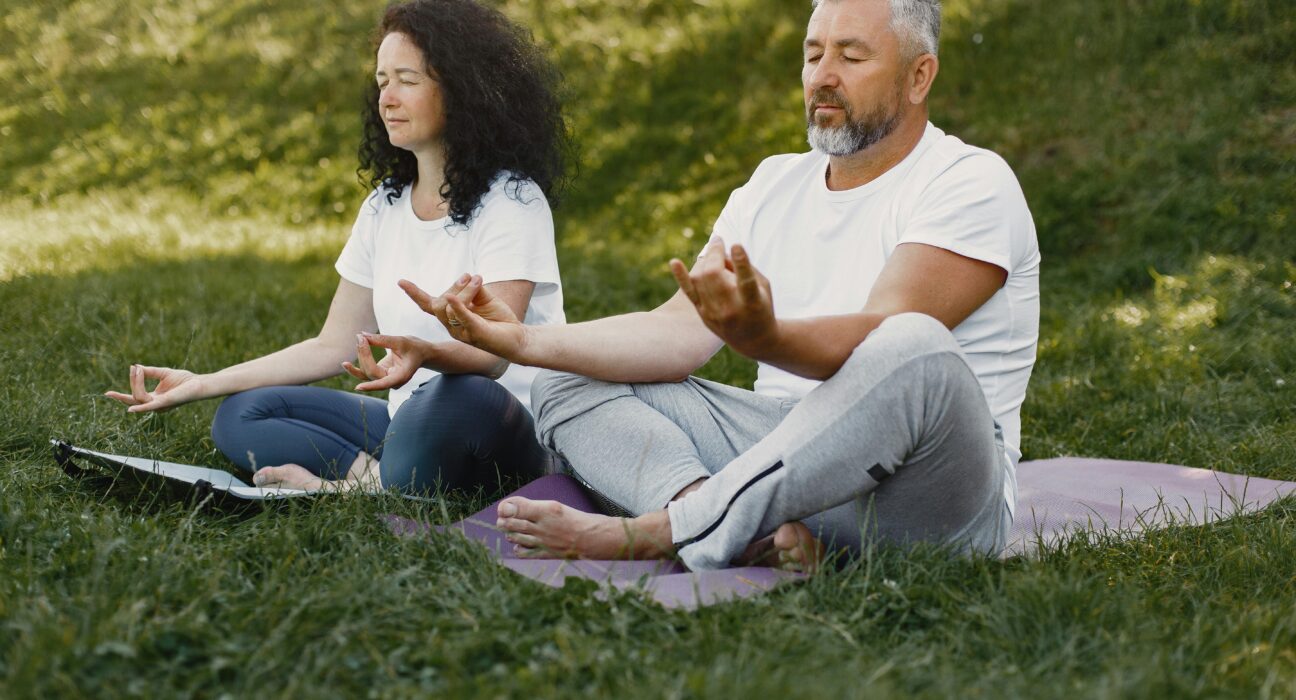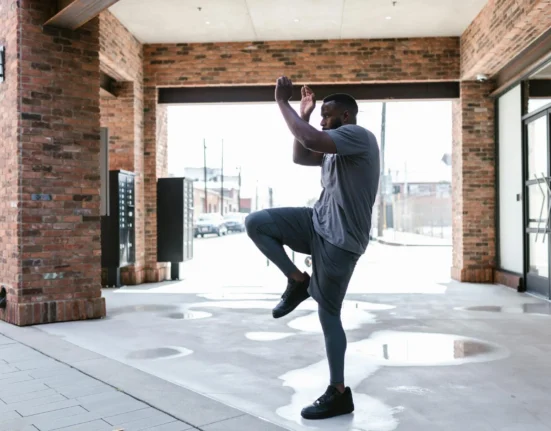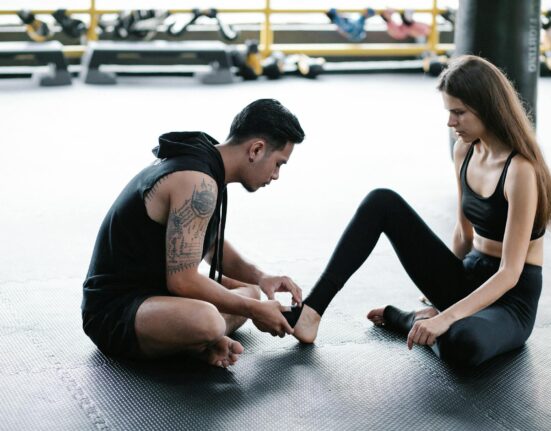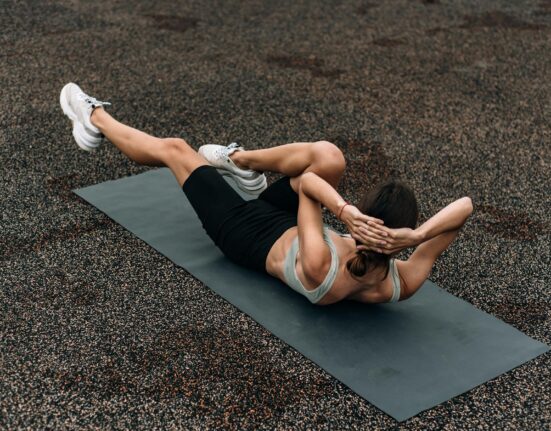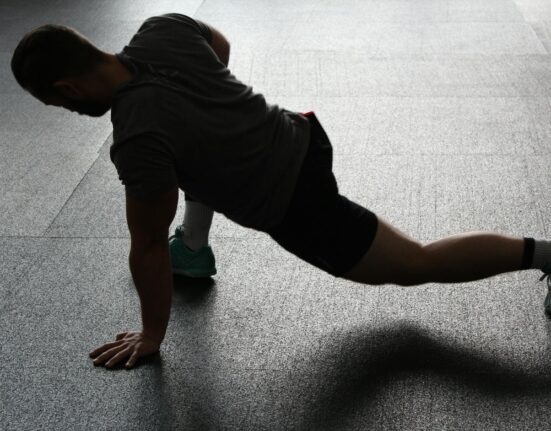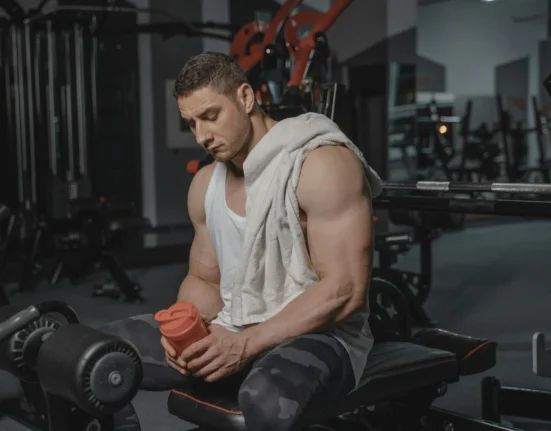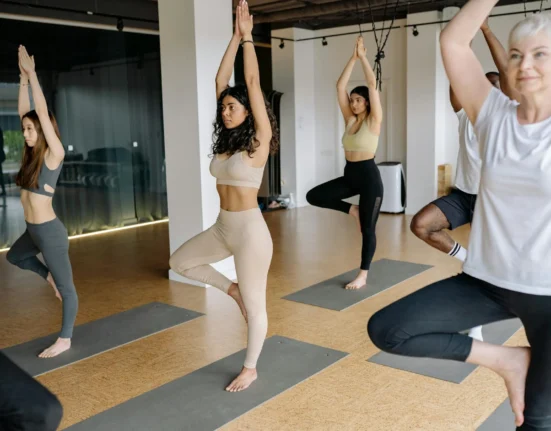Stress and anxiety have become a part of daily life for many people, leaving them feeling tense and overwhelmed. But there’s good news—yoga offers a simple, effective way to ease that mental and physical strain. In this post, we’ll share yoga poses that can help calm your mind and relax your body, giving you practical tools to find relief whenever life feels too heavy.
How Yoga Helps Reduce Stress and Anxiety
Yoga is more than just stretching and poses—it’s a practice that nurtures both body and mind. It’s an accessible way to counter the negative effects of modern stressors, improving your ability to handle life’s challenges with greater ease. Its calming influence is grounded in three key elements: breathwork, movement, and mindfulness. Here’s how these elements come together to reduce stress and anxiety effectively.
The Role of Breathwork in Stress Reduction
Breathwork lies at the heart of any yoga practice and plays a significant role in stress relief. When you’re anxious, your breathing often becomes shallow and rapid, signaling your body to activate its “fight or flight” response. Yoga teaches controlled breathing techniques, such as deep diaphragmatic breathing or Ujjayi breath, which can help reverse this stress response.
Deep and slow breaths calm the nervous system by increasing activation of the parasympathetic nervous system—the body’s natural “rest and digest” mode. Studies even show that consistent breathwork in yoga can lower heart rate, ease muscle tension, and reduce cortisol levels. Interested in diving deeper into the science? Learn more about the effectiveness of yoga breathing for stress relief.
The Connection Between Movement and Mental Clarity
Gentle movement during yoga is another key element that helps wash away tension and bring clarity to your thoughts. Physical activity in yoga, especially poses such as Child’s Pose or Cat-Cow, reconnects you with your body. This connection is crucial because stress often causes physical tightness and disconnects us from how we truly feel.
Beyond just physical benefits, yoga movements stimulate the brain’s release of mood-boosting endorphins. These natural “feel-good” chemicals enhance mental clarity and create a sense of well-being. Want to explore more about how yoga affects the brain? Check out how yoga strengthens mental health.
The Importance of Mindfulness in Yoga Practices
At its core, yoga is a mindfulness practice—it teaches you to be present in the moment and observe your thoughts without judgment. For many, this act of focusing on the “here and now” is a powerful way to quiet the mind and reduce stress triggers. Whether you’re flowing through poses or holding a stretch, practicing mindfulness during yoga encourages self-regulation of emotions.
Evidence suggests mindfulness lowers the overactivity of the amygdala, the brain’s stress center, and enhances emotional resilience. When paired with yoga, it becomes a highly effective tool for managing anxieties. Learn more about mindfulness meditation’s impact on stress reduction.
Through its combination of breathwork, movement, and mindfulness, yoga taps into science-backed methods to soothe your body and mind. Integrating these elements into your day can foster a greater sense of balance and calm.
Beginner-Friendly Yoga Poses for Stress Relief
When life feels overwhelming, yoga can act as a gentle yet powerful reset for your mind and body. Whether you’re facing a hectic day or unwinding from daily responsibilities, dedicating just a few minutes to beginner-friendly yoga poses can help release stress effectively. These poses are simple, soothing, and perfect for anyone looking to find calm amidst chaos.
Child’s Pose (Balasana)

Photo by Elina Fairytale
Child’s Pose is like a warm hug for your entire body. It’s a resting pose that stretches your lower back and hips while gently relaxing your whole system. Here’s how to perform this calming posture:
- Begin by kneeling on the floor, with your big toes touching and your knees slightly apart.
- Lower your upper body forward, allowing your torso to rest between your thighs.
- Stretch your arms out in front of you, or let them rest by your sides, palms facing up.
- Rest your forehead gently on the mat and focus on slow, deep breaths.
The grounded position of your body in Child’s Pose helps settle the nervous system, providing a sense of security and peace. It also encourages introspection and mindfulness, allowing you to momentarily retreat from external stressors. Want to dive deeper into the benefits of Child’s Pose? Visit Yoga Journal’s guide to its calming effects.
Cat-Cow Stretch (Marjaryasana-Bitilasana)
The Cat-Cow stretch is a fluid movement that connects breath and motion, providing instant relief from spinal tension. It’s particularly useful for those who carry stress in their back or shoulders. Here’s how you can try it:
- Start in a tabletop position, with your hands directly under your shoulders and knees under your hips.
- Inhale deeply as you arch your back, lifting your head and tailbone toward the sky (this is Cow Pose).
- Exhale fully as you round your back, tucking your chin to your chest and drawing your belly button inward (this is Cat Pose).
- Continue alternating between these movements, syncing them with your breath.
This gentle stretch massages the spine, enhances flexibility, and relieves built-up tension in the neck and shoulders. It also increases mindfulness by encouraging you to tune into how your body feels with each motion. To learn more about how Cat-Cow promotes relaxation, check out this article on its health benefits.
Cobra Pose (Bhujangasana)
Cobra Pose is a heart-opening backbend that brings renewed energy and a sense of lightness. By lifting your chest, you not only stretch your abdomen but also invite fresh breath into your body, which can ease feelings of anxiety. Follow these steps:
- Lie face-down on your mat with your legs extended and tops of your feet resting flat.
- Place your hands underneath your shoulders and anchor your elbows close to your sides.
- Inhale and press into your palms, gently lifting your chest off the floor.
- Keep your shoulders relaxed and gaze slightly upward, avoiding strain on your neck.
This pose works wonders in countering the physical effects of stress, like hunching or shallow breathing. Its chest-opening posture promotes better lung capacity and oxygen flow, which naturally helps reduce anxiety. Interested in the science-backed benefits of Cobra Pose? Read more at Healthline’s guide.
By incorporating these beginner-friendly yoga poses into your routine, you’ll give yourself the gift of calm and clarity. Whether you need a quick break during the day or a grounding practice before bed, these poses are your go-to tools for relaxation.
Intermediate Yoga Poses to Deepen Relaxation
As you progress in your yoga journey, certain poses can provide even deeper relaxation by targeting both the body and mind. These intermediate-level poses gently challenge your flexibility and strength while promoting a profound sense of calm. Incorporating these into your routine can work wonders for soothing stress and tension.
Standing Forward Bend (Uttanasana)

Photo by Nataliya Vaitkevich
The Standing Forward Bend, or Uttanasana, is a rejuvenating pose that not only stretches your hamstrings and back but also helps calm a racing mind. As you fold forward, gravity assists in drawing tension away from your shoulders and spine, allowing both physical and mental stress to melt away.
To get the most out of Uttanasana:
- Stand tall with your feet hip-width apart.
- Inhale deeply, lengthening your spine.
- As you exhale, hinge from your hips and lower your torso over your legs.
- Let your arms hang or grasp opposite elbows, and relax your neck completely.
This inverted position boosts blood flow to the brain, promoting clarity and focus. It also encourages mindfulness, as you remain present in the moment during the stretch. Interested in learning more about Uttanasana? Explore its benefits here.
Bridge Pose (Setu Bandhasana)
Bridge Pose is a gentle backbend that opens the chest and stimulates the nervous system. It counters fatigue and serves as a powerful tool for relaxation, especially after a long day. This pose not only stretches the chest, neck, and spine but also rejuvenates tired muscles in your lower body.
Here’s how to practice the Bridge Pose:
- Lie on your back with your knees bent, feet flat on the mat, and placed hip-width apart.
- Position your arms beside your torso, palms facing down.
- Press into your feet and lift your hips while keeping your shoulders grounded.
- Clasp your hands beneath your lower back for added support, or leave your arms extended.
The moderate inversion of Bridge Pose promotes blood flow to the heart, reducing stress and quieting the mind. For a more restorative option, place a yoga block under your sacrum to support your hips. Learn more about the benefits of Bridge Pose here.
Legs-Up-The-Wall Pose (Viparita Karani)
Legs-Up-The-Wall Pose, or Viparita Karani, is a deeply restorative posture ideal for calming your nervous system. By elevating your legs, this pose relieves discomfort in the lower back and allows blood to circulate away from the legs, bringing more oxygen to the upper body and brain.
To ease into this pose:
- Sit sideways next to a wall and swing your legs up as you lie back.
- Extend your arms to your sides, palms facing upward.
- Close your eyes and focus on natural, deep breathing.
Just five to ten minutes in this position can make a world of difference in reducing stress and tension. It’s a great way to wind down before bed or even as a mid-day reset. Discover more about Viparita Karani here.
By adding these intermediate poses to your practice, you’ll create space for greater relaxation while building strength and flexibility. Whether you need a quick moment of calm or a deeper release, these postures are excellent choices for reducing stress and finding balance.
Tips for Maximizing Stress Relief Through Yoga
Stress relief through yoga is about more than just practicing poses—it’s about intentionally setting the right atmosphere, committing to a consistent routine, and creatively pairing yoga with other mindfulness practices. Here, you’ll find practical tips to amplify the stress-relieving benefits of your yoga practice.
Set Up a Comfortable Space

Photo by Mikhail Nilov
Creating a tranquil environment for yoga is the first step in reaping its full benefits. A peaceful space allows you to focus, relax, and fully immerse yourself in your practice. Here are some tips for curating your yoga sanctuary:
- Choose a Quiet Spot: Avoid noisy or high-traffic areas in your home. If possible, select a secluded corner where you won’t be distracted.
- Eliminate Clutter: A clean, open space promotes mental clarity and prevents distractions.
- Incorporate Soft Lighting: Dim lights or natural sunlight can enhance relaxation. Candles or fairy lights can create a calming atmosphere.
- Add Elements of Nature: Bring in plants or natural materials like a bamboo mat to ground the space.
- Consider Aromatherapy: Scents like lavender or eucalyptus can heighten relaxation and improve focus.
Want more tips on designing the perfect yoga spot? Learn how to set up a peaceful practice area at home.
Incorporate a Consistent Practice
Consistency is key when it comes to reducing stress through yoga. Think of it like brushing your teeth—it works best when it’s part of your daily routine. Here’s how you can build a sustainable yoga habit:
- Start Small: Commit to just 10–15 minutes a day if you’re new to yoga. This manageable start helps you stay consistent without feeling overwhelmed.
- Set a Routine: Tie your practice to a specific time of day, like morning to start your day calmly or evening to decompress before bed.
- Track Your Progress: Consider using an app or journal to log your sessions and reflect on how they impact your mood.
- Stay Flexible: Life happens—missing a day or two is okay. The key is to return to your mat without guilt.
Over time, you’ll notice how even short, consistent practices can transform the way you handle stress. For more inspiration, check out this guide to cultivating regular yoga habits.
Combine Yoga with Meditation or Journaling
Yoga, when paired with other mindfulness activities, can supercharge your stress relief. Combining it with meditation or journaling can help you process emotions more deeply and stay centered. Here’s how:
- Yoga + Meditation: Begin or end your yoga session with meditative breathing or a short mindfulness practice. Meditation enhances yoga by calming your mind, making you more present during your poses. Interested? Learn more about simple yoga and meditation practices for stress.
- Yoga + Journaling: After your session, take a few minutes to jot down your thoughts or feelings. Write about what you’re grateful for, or unpack what’s been weighing on your mind. This combination helps clear mental clutter and keeps stress at bay.
- Use Guided Resources: Apps or YouTube channels offering paired yoga and meditation routines make integrating these practices seamless and beginner-friendly.
Experiment with these combinations to find what resonates most with you. Often, it’s about exploring and adapting until you create a routine that feels deeply personal and effective.
Additional Resources for Practicing Yoga at Home
Practicing yoga at home offers flexibility, convenience, and the freedom to customize your practice to fit your schedule. Whether you’re carving out ten minutes of quiet in the morning or winding down after a long day, a wealth of resources is available to guide your journey. From beginner-friendly apps to online classes, these tools are perfect for creating a stress-relieving yoga routine.
Yoga Apps for Daily Practice
If you’re looking for structure and variety in your home yoga practice, apps can be a game-changer. They offer guided classes, customizable routines, and progress tracking—all right at your fingertips. Here are a few standout options:
- Alo Moves: This app is highly recommended for its wide variety of yoga styles and levels. You’ll find everything from restorative yoga to power flows.
- Down Dog: Loved for its customizable sessions, this app allows you to pick your practice length, focus area, and music.
- Pocket Yoga: Perfect for on-the-go sessions, it provides detailed pose guides and offline access.
Looking for more recommendations? Check out this list of the best yoga apps to help you stay consistent at home.

Photo by Antoni Shkraba
Online Yoga Classes for Stress Relief
Online yoga videos and virtual classes bring experienced instructors directly into your home. These options are ideal for elevating your practice and focusing specifically on stress relief:
- Yoga with Adriene on YouTube: Adriene’s channel offers free yoga classes for all levels, with a particular focus on mindfulness and relaxation. Her approachable style makes it easy to start. Visit her channel at Yoga With Adriene.
- DoYogaWithMe: This platform provides access to free yoga videos, including restorative yoga classes designed to melt stress away. Explore their offerings at DoYogaWithMe.
- YogaWorks Therapeutic Classes: Perfect for those dealing with chronic stress or tension. The therapeutic classes gently guide you toward relaxation and healing. Learn more at YogaWorks.
Beginner-Friendly YouTube Channels
YouTube remains a fantastic resource for free, beginner-friendly yoga guidance. Whether you’re just starting or looking for gentle routines to ease stress, these channels offer plenty of options:
- Yoga With Adriene: Adriene’s 30-day challenges are great for building a daily yoga habit.
- Boho Beautiful: Known for its aesthetic visuals and calming sequences, this channel is best for quick stress-relief flows.
- Yoga With Tim: Straightforward instruction and accessible poses make this channel perfect for those new to yoga.
Discover more YouTube recommendations from Lifehacker’s guide to at-home yoga classes.
By using these apps, videos, and online classes, you’ll have all the tools at your disposal to build a nurturing yoga routine. Whether you prefer structured guidance or casual flows, these resources make it easy to stay committed and find peace from the comfort of your home.
Conclusion
Yoga offers more than just physical benefits—it’s a proven way to calm the mind and release stress. By practicing poses like Child’s Pose, Cat-Cow, and Legs-Up-The-Wall, you can ease tension while re-centering yourself. The combination of mindful movement, intentional breathing, and relaxation techniques can help you build resilience against daily stressors.
Consistency is key. Even a few minutes a day can have a lasting impact on your mental health. Whether you’re a beginner or building on your yoga practice, these poses provide a solid foundation for finding peace and balance.
Take time to explore what works best for you. Roll out your mat, try the poses we’ve shared, and see how yoga can transform your well-being. What steps will you take today to include more calm in your routine?


